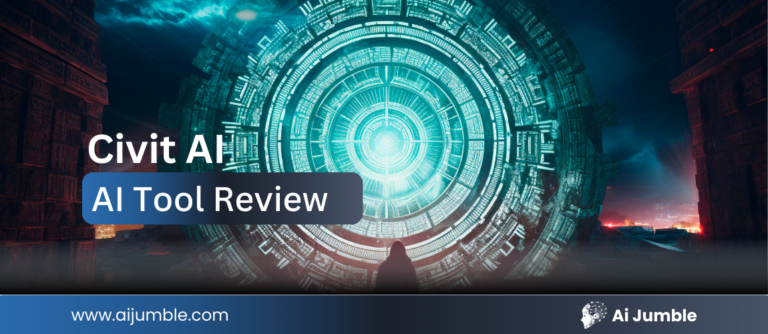Effective and efficient communication is the key to personal and professional success in today’s fast-paced digital world. Whether you need to respond to business emails, reply to customer inquiries, or manage multiple social media accounts, the tools you use play a critical role. Here, we introduce the buzz term ‘AI response generators’.
Table of Contents
ToggleWhat Is an AI Response Generator?
An AI response generator is a smart tool that produces written replies with minimal input from users. Powered by advanced natural language processing (NLP) algorithms, these tools understand context, tone, and semantics to craft relevant and thoughtful responses that sound human.
Practical applications of AI response generators span many fields, including:
- Customer service
- Content creation
- Everyday personal communication
Benefits of AI response generators:
- Save valuable time
- Improve response quality
- Deliver personalized messaging
- Support multilingual communication
Keep reading to uncover how AI response generators function, their key advantages, and the top tools that deserve your attention.
Features and Benefits of AI Response Generators
Here’s what makes these tools indispensable for modern communication tasks:
- Automated Response Suggestions: Save time with AI-generated replies tailored to the context of incoming messages.
- Personalization: Responses can be customized to reflect your unique communication style.
- Context-Aware Replies: AI can analyze and respond intelligently based on message context, ensuring appropriateness.
- Multi-Platform Compatibility: Use AI across platforms like email, social media, and customer service dashboards.
- Sentiment Analysis: AI can adjust tone to provide empathetic or professional responses when required.
- Language Support: Perfect for global businesses, these tools support multiple languages for seamless international communication.
- Quick Replies: Frequently-used reply templates for efficiency without sacrificing personalization.
Top AI Response Generators You Should Know
If you’re considering adopting an AI response generator, the following five options are among the best available today:
1. Toolbaz
Toolbaz is designed to enhance your online communication by generating accurate and contextually relevant responses in seconds.
Key Features- Supports advanced models like GPT-4 for nuanced and precise communication.
- Multi-language support for global communication.
- Customization capabilities for adding a personal touch.
- Perfect for content creators and businesses seeking polished and professional
2. Toolsaday
With a focus on simplicity and versatility, Toolsaday’s platform seamlessly creates responses for various tones and platforms.
Key Features- Adjustable tone settings ranging from professional to casual.
- Sentiment analysis for emotionally intelligent response generation.
- Multi-platform support for emails, social media, and beyond.
- Ideal for customer service teams and social media managers managing diverse client interactions.
3. Typli
Typli is crafted for professionals aiming to elevate their digital communications with high-quality, editable AI responses.
Key Features- Email and text support with tailored recommendations.
- Intuitive interface for easy use by users of all industries.
- Light and premium options, ensuring accessibility to everyone.
- Suited for professionals handling large volumes of email communication, especially in client-facing roles.
4. AIFreeBox
This free-to-use AI response generator is perfect for quick, adaptable replies across platforms.
Key Features- Vast text customization and tone settings.
- Multi-language compatibility using advanced NLP technology.
- Completely free, making it highly accessible for individuals and smaller businesses.
- An excellent solution for individuals or small business owners seeking an easy-to-use and budget-friendly option.
5. EditPad
EditPad focuses on refining messages with accuracy and professionalism while seamlessly generating smart replies.
Key Features- Offers both basic grammar corrections and detailed response generation.
- Works across multiple touchpoints for versatile communication.
- Real-time improvements for improved response delivery.
- Great for writers and editors seeking to produce polished responses with minimal effort.
Real-Life Use Case: AI Response Generators Elevating Customer Service
AI response generators significantly enhance customer service operations by delivering prompt and accurate replies. They can handle high volumes of repetitive customer queries through chatbots, leaving human agents free to tackle more complex issues. Their 24/7 availability also ensures customers receive the support they need, any time of day.
For example, integrated customer service bots powered by AI can address requests like order tracking or refunds, while offering personalization that improves customer satisfaction and loyalty.
How to Use an AI Response Generator?
Follow these easy steps to get the most out of any AI response generator:
- Input the Original Message: Paste or type the message you wish to reply to.
- Select Tone, Context, and Language: Make adjustments according to the tone (e.g., professional, friendly) or language you prefer.
- Generate Responses: Click the generate button to receive an AI-crafted response.
- Review and Customize: Go over the generated response and tweak it to suit your needs and personal style.
- Send Your Message: Copy and paste it wherever needed or share it directly if the platform supports it.
Unlock the Full Potential of AI Responses
AI response generators are much more than time-saving tools. They simplify communication tasks, improve accuracy, and contribute to scaling operations efficiently within businesses. Whether you’re a solopreneur seeking quick email replies or a team managing thousands of inquiries daily, there’s an AI solution for you.
Elevate your communication game today by trying one of these tools. Discover how they can help you craft thoughtful responses seamlessly while saving time and effort.
FAQs
Identifying an AI-generated response can sometimes be challenging, but there are a few key indicators to watch for. AI responses may occasionally lack the nuanced tone or emotional depth present in human-generated content. Furthermore, they can exhibit repetitive structures or phrasing. Certain AI-generated texts might also provide overly formal or overly generic answers that diverge slightly from conversational norms. However, advancements in AI technology are continually minimizing these distinctions, making it more difficult to distinguish AI-crafted responses without additional clues or context.
Generative AI can be used responsibly by adhering to ethical guidelines and focusing on transparency, accountability, and inclusivity. Users and developers should ensure that AI-generated content aligns with factual accuracy and avoids spreading misinformation. It's also essential to maintain human oversight, particularly when AI is applied in sensitive areas such as healthcare, education, or legal systems. Privacy concerns must be addressed by safeguarding personal data utilized during AI training processes. Furthermore, fostering diversity in datasets and algorithms can help mitigate biases and promote fairness. By treating generative AI as a supplement to human creativity and decision-making, rather than a replacement, society can maximize its benefits while minimizing potential harm.
AI generates responses through a process that involves analyzing input data, processing it using complex algorithms, and producing output based on learned patterns. Most generative AI systems are powered by machine learning models, such as neural networks, that have been trained on massive datasets containing text, images, or other types of information. When a user inputs a query, the AI interprets the prompt, searches for patterns and context within its training data, and formulates a response that aligns with the input. Advanced AI models, like those based on transformer architectures, utilize attention mechanisms to understand relationships between words or elements, enabling them to create coherent and contextually relevant replies. While incredibly powerful, these systems rely heavily on the quality and diversity of the data they are trained on, which can affect their accuracy and inclusiveness.
Improving the accuracy of AI-generated responses requires a combination of thoughtful input and leveraging the strengths of the AI system. First, ensure that your queries are clear, specific, and well-structured, as vague or ambiguous input can lead to less precise results. Providing context or examples can also help the AI understand your intent more effectively. Additionally, using high-quality, diverse training data ensures that the AI system has a comprehensive foundation to draw from. Regularly updating the AI with new and relevant information helps maintain its relevancy and accuracy over time. Lastly, combining the AI's output with human review or refinement ensures the final responses align closely with your objectives.
Yes, each AI response is generated fresh based on the specific input provided at the time. The AI evaluates the input context and generates a unique response rather than relying on pre-written or stored answers. This approach ensures that the output is tailored to the precise request or query, making it relevant and adaptive to varying needs or situations. However, consistency can be maintained by including detailed and structured prompts.
Stay Updated on the Latest in AI
New AI tools are launching every day — we make sure you’re the first to know. Join a growing community exploring 5,000+ AI tools, with new ones added daily.







